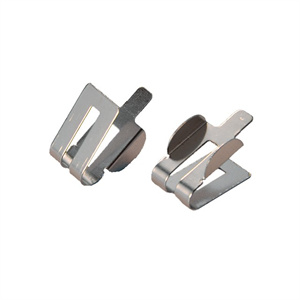The blackening and rust prevention treatment of Precision Metal Stamping is an important surface treatment technology aimed at improving the corrosion resistance, wear resistance, and appearance of parts. The following are the general steps and precautions for blackening and rust prevention treatment of Precision Metal Stamping:
Cleaning and pretreatment:
Firstly, use a cleaning agent to thoroughly remove oil, dust, and other impurities from the surface of Precision Metal Stamping. The selection of cleaning agents should be determined based on the metal material and the type of oil stains.
After cleaning, pre-treatment such as acid washing may be necessary to remove surface oxides, rust, and other stains. After pickling, rinse thoroughly with clean water.
Blackening treatment:
Choose the appropriate blackening agent, common blackening agents include oxidants (such as sodium nitrite, sodium nitrate, etc.) and catalysts (such as sodium hydroxide, sodium carbonate, etc.).
Immerse the pre treated Precision Metal Stamping into the blackening agent and control the processing time and temperature. The selection of processing time and temperature should be determined based on the type of blackening agent and metal material to ensure a uniform and dense oxide film is obtained.
During the blackening process, it is necessary to closely monitor the concentration, temperature, and soaking status of the blackening agent to ensure stable treatment effects.
Rust prevention treatment:
After the blackening treatment is completed, in order to further improve the corrosion resistance of the parts, rust prevention treatment can be carried out. Common anti rust methods include coating with anti rust oil, paint, or other anti rust coatings.
When selecting anti rust coatings, it is necessary to consider the corrosion resistance, wear resistance, and compatibility with Precision Metal Stamping substrates of the coating.
When applying anti rust coatings, it is necessary to ensure that the coating is uniform, free from holidays and peeling.
Quality control and testing:
Quality control and testing of Precision Metal Stamping after blackening and rust prevention treatment, including visual inspection, corrosion resistance testing, etc.
The appearance inspection mainly checks whether the surface of the parts is uniformly blackened, free of rust and stains.
Corrosion resistance testing can be conducted through methods such as salt spray testing and wet heat testing to evaluate the corrosion resistance of parts.
Notes:
During the process of blackening and rust prevention treatment, it is necessary to pay attention to safety operations to avoid harm to human health and the environment.
Suitable blackening agents and rust proof coatings need to be selected based on different metal materials and part shapes.
During the processing, it is necessary to strictly control parameters such as the concentration, temperature, and soaking time of the treatment solution to ensure stable treatment effects.
The parts that have undergone blackening and rust prevention treatment need to be properly stored and transported to avoid being affected by factors such as moisture and corrosion.
By blackening and rust prevention treatment, Precision Metal Stamping parts can achieve better corrosion resistance, wear resistance, and appearance quality, thereby meeting higher usage requirements.
